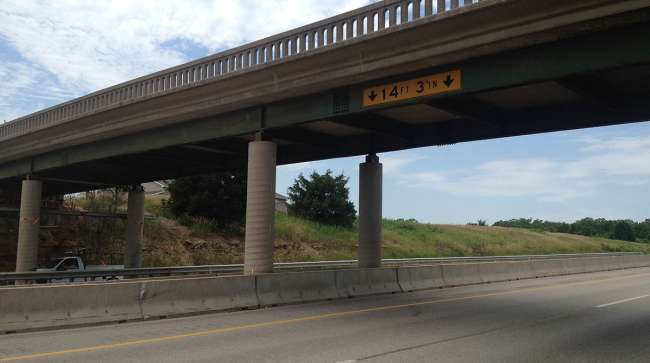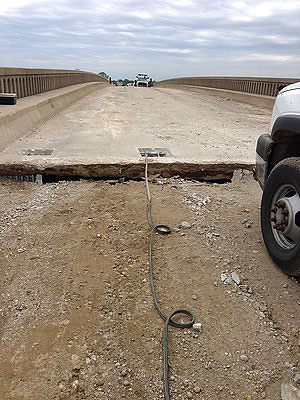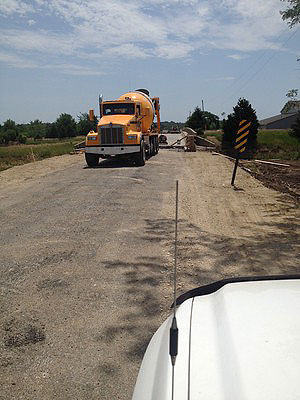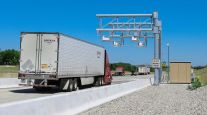Staff Reporter
Kansas Turnpike Authority Raises Bridges to Improve Truck Clearance

The Kansas Turnpike Authority is continuing the process of elevating bridges that pass over the turnpike to improve clearance for large freight vehicles.
Rachel Bell, director of business services and customer relations for KTA, said the authority is trying to raise all of its bridges to a height of at least 15 feet, 9 inches. KTA operates separately from the Kansas Department of Transportation, although legislation established a formalized partnership for the groups in 2013.
Opened in 1956, the 236-mile Kansas Turnpike includes portions of interstates 35, 335, 470 and 70. The route links Wichita, Topeka and Kansas City, which Bell said were the state’s largest cities at the time of the route’s construction.
The bridge raising is meant to facilitate freight movement on the turnpike and prevent fleets from needing to seek out alternate routes on smaller roadways that may not be able to accommodate heavy freight traffic as efficiently.
“It is a big truck route,” Bell told Transport Topics. “Our lower bridges were causing trucking companies to have to really look at where their routes went when they were coming through the state. We wanted to make that easier for them and obviously keep them on the turnpike.”


Construction crews have been using hydraulic pistons to raise the bridge structures from their concrete support pillars, thereby creating space for additional support. The workers then regrade the roadway that connects to either side of the bridge. (Kansas Turnpike Authority via flickr)
KTA partnered with Burns & McDonnell, a building firm based in Kansas City, Mo., through an engineering, procurement and construction contract to deliver the project. For the majority of the elevation efforts, construction crews have been using hydraulic pistons to raise the bridge structures from their concrete support pillars, thereby creating space for additional support. The workers then regrade the roadway that connects to either side of the bridge.
During the raising process, traffic is closed on the bridge that carries the road across the turnpike. Traffic on the turnpike remains uninterrupted. Bell said it takes about four hours to lift a bridge, but total construction at each location takes about two months. She noted that the hydraulic jack technique has been more cost-effective than replacing all of the bridges.
Between 2016 and the end of June 2019, construction crews elevated 39 bridges. Another three bridges are scheduled for elevation over the spring and summer. Bell said most of those that have been raised lie along Interstate 35 between Topeka and the Oklahoma border. Most of the bridges have been raised with the hydraulic method, although about 10 have been treated as part of other construction projects.
KTA’s work stemmed from goals identified in the group’s 2015 Long Term Needs Study, which acts as a guide for preservation and modernization projects.
“Many of the improvements were aimed at improving freight,” Bell said. “We took a really hard look at what things needed to be modernized to help freight movement along the turnpike.”
The study also identified a need for better truck parking options at service locations. Kansas, along with seven other Midwestern states, has been active in the Trucks Park Here program to inform truckers about parking availability along interstate highways.
Indiana, Iowa, Kansas, Kentucky, Michigan, Minnesota, Ohio and Wisconsin in January 2019 launched the program, which offers up-to-the-minute data on how many spaces are available at certain rest areas.
The states are represented by the Mid America Association of State Transportation Officials, a regional association under the umbrella of the American Association of State Highway and Transportation Officials.




